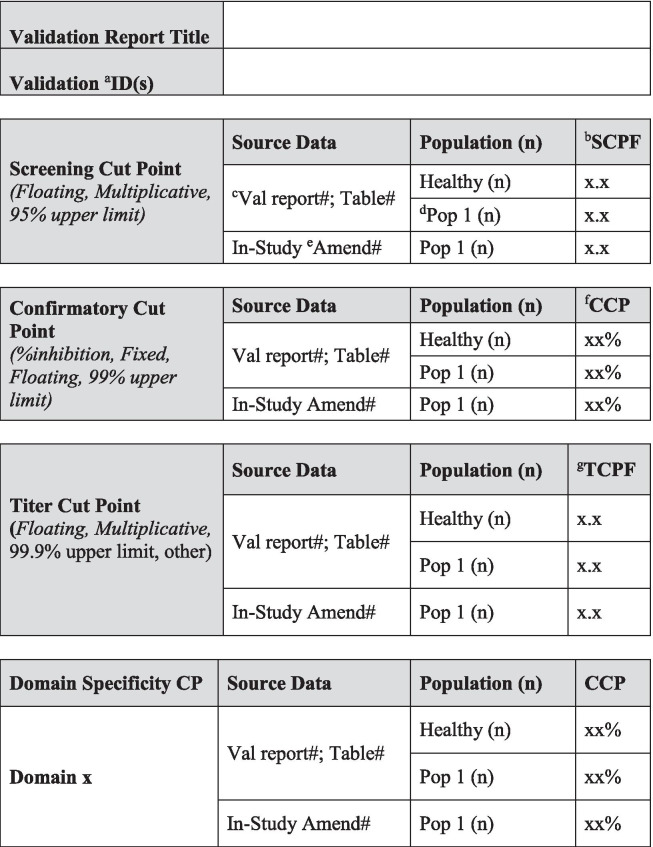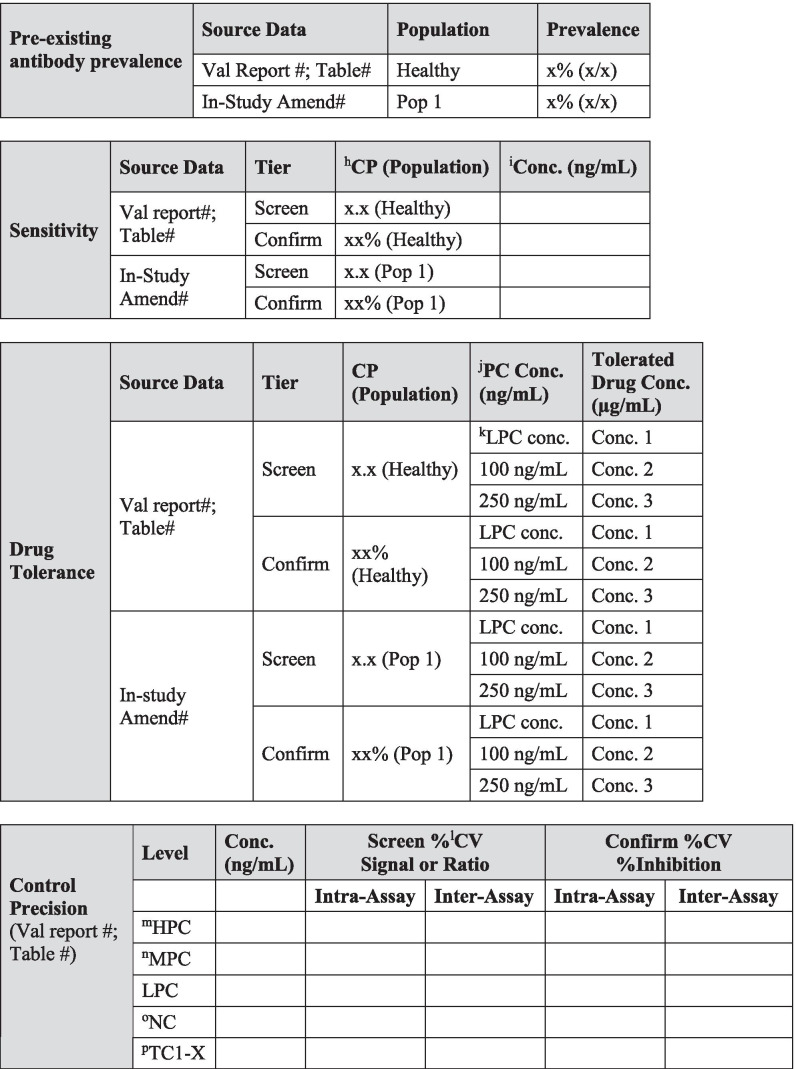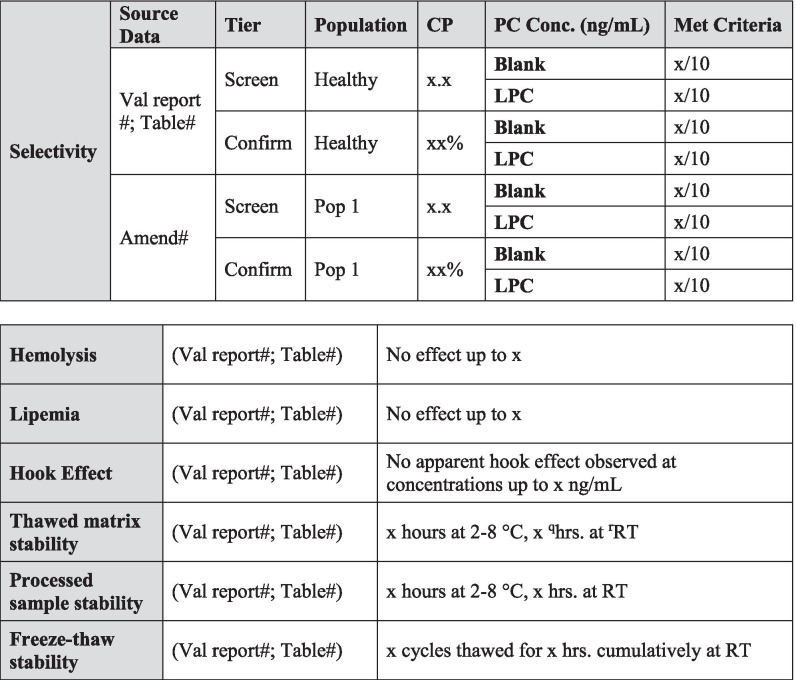Table II.
Validation Summary
Table II is used to capture salient validation data details over the life cycle of use. Fields have been included for the first clinical population with the expectation that this table will be updated with details pertinent to further populations and filings. Pop indicates population and should be replaced with the disease state indication. When floating cut point are used, cut point factors should be included in the table for SCP and TCP. For multiple domain biologics, pertinent details for this testing should be added to this table, including domain specificity, sensitivity, and domain-specific CP. Sensitivity, drug tolerance, and target tolerance concentrations should be the concentration in neat matrix. Target tolerance can be reported similarly to that for drug tolerance. Precision is tested and reported across all control levels during validation, including typically 5 titer controls spanning the assay cut point, but only the NC, LPC, and HPC are carried into in sample analysis. Any updates to the control levels as part of assay life cycle management including changes due to in-study cut point application such as increased or decreased LPC, population-specific drug or target tolerance, and population-specific selectivity testing should be clearly noted. Impact assessment should be described for drug tolerance and target tolerance in the validation report pertaining to the levels of drug or target expected in applicable study samples
aID indicates identification. bSCPF indicates screening cut point factor. cVal indicates validation. dPop indicates population. eAmend indicates amendment. fCCP indicates confirmatory cut point. gTCPF indicates titer cut point factor. hCP indicates cut point. iConc indicates concentration. jPC indicates positive control. kLPC indicates low positive control. lCV indicates coefficient of variation. mHPC indicates high positive control. nMPC indicates middle positive control. oNC indicates negative control. pTC indicates titer control. qHrs. indicates hours. rRT indicates room temperature



